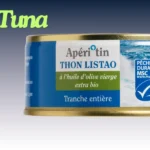Horse blinkers, also known as blinders, are an essential piece of equipment used in horse racing and driving. They play a critical role in enhancing a horse’s performance and ensuring its safety. This comprehensive guide will delve into the various aspects of horse blinkers, their types, benefits, and proper usage, providing you with all the necessary information to make informed decisions for your equine companion.
What Are Horse Blinkers?
Horse blinkers are small pieces of leather or plastic that attach to a horse’s bridle or halter. They are designed to restrict the horse’s field of vision, preventing it from seeing to the side and behind. This limitation in vision helps to keep the horse focused on the path ahead and minimizes distractions from the surrounding environment.
Types of Horse Blinkers
There are several types of horse blinkers available, each serving a specific purpose. Understanding the differences between these types can help you choose the right one for your horse.
1. Full Cup Blinkers
Full-cup blinkers completely cover the horse’s eyes from the side, providing the maximum restriction in vision. These are typically used for horses that are easily distracted or have a tendency to shy away from objects or other horses.
2. Half Cup Blinkers
Half-cup blinkers cover only the rear half of the horse’s eyes. They provide a moderate level of restriction, allowing the horse to see some of its surroundings while still minimizing distractions.
3. French Blinkers
French blinkers, also known as “cheaters,” are made of a mesh material that allows some peripheral vision. They are used to encourage a horse to remain focused while still being aware of its surroundings.
4. Pacifier Blinkers
Pacifier blinkers include a mesh screen that covers the entire eye area. They are used primarily in harness racing to prevent dirt and debris from entering the horse’s eyes, while still offering some visual restriction.
Benefits of Using Horse Blinkers
The use of horse blinkers offers several advantages for both the horse and the rider. These benefits can greatly enhance performance, safety, and overall well-being.
1. Improved Focus
One of the primary benefits of horse blinkers is improved focus. By limiting the horse’s field of vision, blinkers help to keep the horse’s attention on the path ahead, reducing the likelihood of distractions that can lead to erratic behavior or loss of speed.
2. Enhanced Safety
Blinkers contribute to enhanced safety for both the horse and the rider. By preventing the horse from seeing potentially frightening or distracting objects, blinkers reduce the risk of the horse spooking or shying away, which can lead to accidents or injuries.
3. Better Performance
In competitive settings such as horse racing or show jumping, blinkers can lead to better performance. Horses are more likely to maintain a straight and steady course when their vision is restricted, resulting in improved speed and precision.
4. Calmness and Confidence
Some horses experience anxiety or nervousness when they can see too much of their surroundings. Blinkers can help to create a sense of calmness and confidence by providing a more controlled and predictable environment.
How to Choose the Right Horse Blinkers
Selecting the appropriate blinkers for your horse requires careful consideration of several factors. The following guidelines can help you make an informed decision.
1. Assess Your Horse’s Behavior
Observe your horse’s behavior in various settings. For horses that need some level of awareness, French or pacifier blinkers might be the better choice.
2. Consider the Activity
The type of activity your horse will be participating in can influence your choice of blinkers. For high-speed activities like racing, full-cup blinkers can help maintain focus and speed. For more relaxed activities, half-cup or French blinkers may provide a balance between focus and awareness.
3. Comfort and Fit
Ensure that the blinkers fit comfortably and securely on your horse’s bridle or halter. Poorly fitting blinkers can cause discomfort and may even lead to injuries. Check the materials used and opt for blinkers that are lightweight and durable.
4. Professional Advice
Consult with a professional trainer or equine specialist to determine the best type of blinkers for your horse. They can provide valuable insights based on their experience and expertise.
Proper Usage and Maintenance of Horse Blinkers
Using horse blinkers correctly and maintaining them properly is crucial for their effectiveness and longevity. Follow these tips to ensure optimal use and care.
1. Gradual Introduction
Introduce blinkers to your horse gradually. Allow your horse to become accustomed to wearing them in a controlled environment before using them in competitive or high-stress situations.
2. Regular Inspection
Regularly inspect the blinkers for any signs of wear and tear. Check for frayed edges, broken straps, or damaged materials. Replace any blinkers that show significant signs of damage to prevent accidents.
3. Cleaning and Storage
Keep the blinkers clean and store them properly when not in use. Clean them with mild soap and water, and avoid using harsh chemicals that can damage the materials. Store blinkers in a cool, dry place away from direct sunlight.
4. Monitor Your Horse
Continuously monitor your horse’s behavior and comfort when using blinkers. If you notice any signs of discomfort, irritation, or adverse reactions, consult with a professional to determine if adjustments or changes are needed.
Conclusion
Horse blinkers are an invaluable tool for enhancing focus, safety, and performance in various equine activities. By understanding the different types of blinkers, their benefits, and proper usage, you can make informed decisions that will benefit both you and your horse. Remember to consider your horse’s behavior, activity, and comfort when choosing blinkers, and always prioritize proper maintenance and monitoring.
Read our more Blogs…


